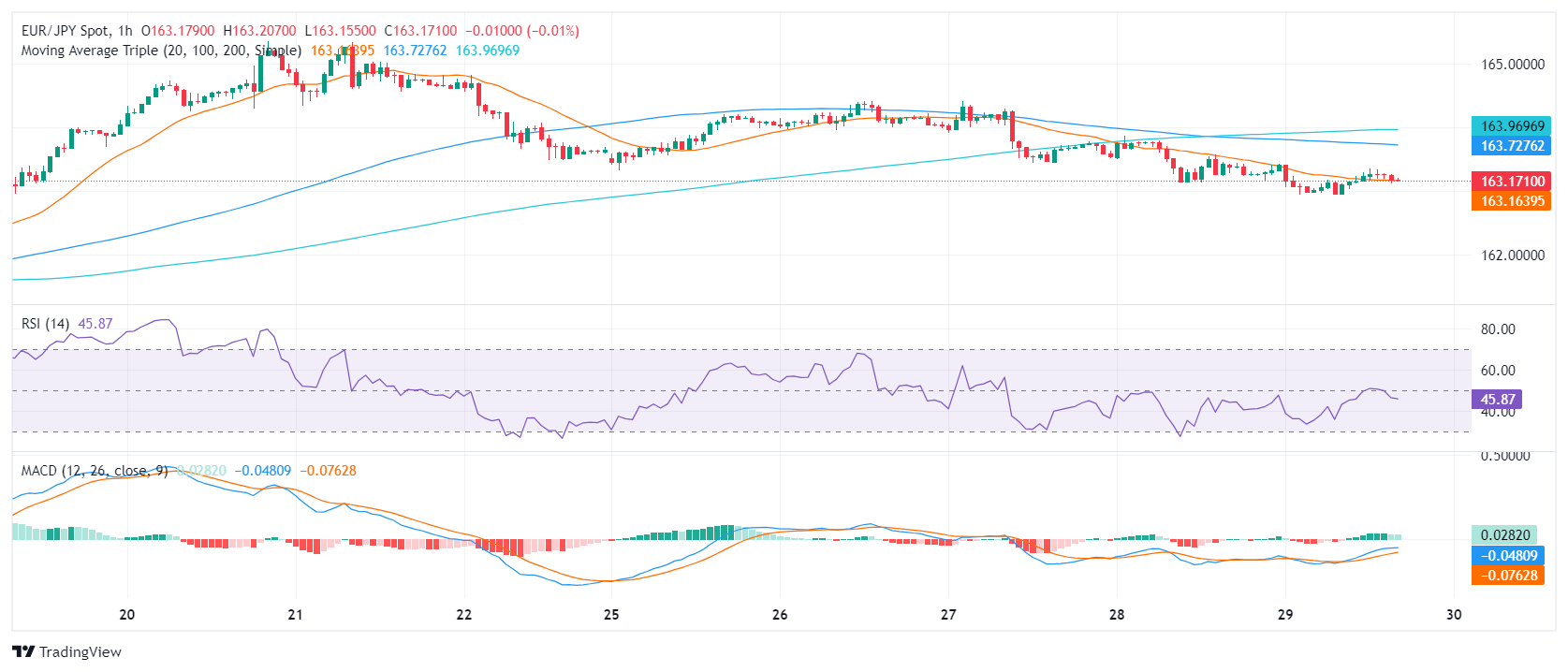- The daily chart reveals slightly bullish momentum, with RSI at 52, signifying resilient buying traction.
- Indicators in the hourly chart denote a mild downward trend, which could hint at a potential shift.
- Buyers must successfully maintain the main SMAs to mitigate bearish threats and ensure bullish continuation.
The EUR/JPY pair is currently trading at 163.13, exhibiting minimal losses. Despite the declines, the broader momentum remains bullish, but this sentiment remains finely balanced and open to fluctuations.
On the daily chart, the EUR/JPY pair indicates signs of a relatively positive to neutral momentum. The Relative Strength Index (RSI) has maneuvered within the positive territory over the most recent sessions, with the latest reading positioned at 52. This reading suggests a slightly bullish momentum, yet potentially susceptible to changes in market sentiment. Meanwhile, the red bar on the Moving Average Convergence Divergence (MACD) histogram suggests negative momentum, signaling that the sellers might be gearing up.
EUR/JPY daily chart

Shifting focus onto the hourly chart, fluctuations are more noticeable. The RSI values display a slight downward trend throughout the latest hours, reaching as low as 46. Alongside this, the consistently shrinking green bars of the MACD confirms the overall bearish momentum.
EUR/JPY hourly chart

In conclusion, while short-term indicators might show an inclination toward a sellers’ market, it’s important to note this is within a broader bullish context as seen on the daily chart. Buyers must step in and defend the 20-day SMA at 162.85 to leave the overall bullish trend intact.
